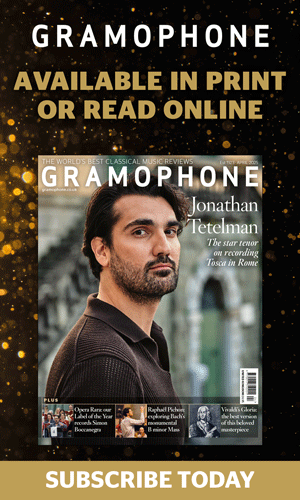Remember the radio?
Andrew Everard
Friday, September 6, 2024
Terrestrial radio tuners are something of a rarity these days – but even with the FM service looking set to remain for a while, is the answer to switch to online listening?

It should have come as something of a shock to look at the website of a well-known UK hi-fi retailer and discover that it stocked just two radio tuners: one a composite device, capable of receiving FM, DAB/DAB+ and internet radio, the other an even more purist FM/AM unit. Writing this when the BBC Proms broadcasts are just getting into their stride, and with the future of FM radio in the UK seemingly assured for at least as long as we can continue buying internal combustion-powered cars – the latest information wavers between FM lasting until 2030 as a minimum, and having been given an indefinite stay of execution – it would seem the choice for anyone wanting to take radio seriously is severely limited.
Then again, I found myself trying to remember when the last time was that I actually listened to FM radio, apart from very rare occasions when I’ve found myself out of DAB coverage while driving; indeed it’s only in the car that I tend to listen to DAB radio itself, as the majority of my home ‘live’ listening is to streamed services, both from the BBC and from other broadcasters worldwide. With many now carrying their services in at least higher-resolution lossy audio formats, the quality on offer is frankly good enough for close attention, while the variety of content available should be enough to please even the most esoteric tastes.
Dig a little deeper into the streaming services, made simple by the ability to search the available content by genre, and then drill down into sub-genres, and there are treasures to be found, whether you want to binge on a specific composer, or just a particular type of music, be it choral, piano, Baroque or whatever. But is this a case of the old rag trade-line ‘Never mind the quality, feel the width’? Hardly: being of an age when radio formed a major part of my early entertainment consumption, from classic comedies on what was still just about known as the Home Service and the Light Programme to early explorations of classical music on the Third Programme, I still pay close attention to listening to ‘the wireless’. Whereas internet radio capability is all too often tagged on to the description of network audio devices in a sort of ‘oh, and …’ manner, how such products perform when streaming live radio, from speech to music, is a major part of my assessment of their quality.
And though the basic parameters of such streams may seem limited by the codecs used, in my opinion high-quality ‘receiving’ equipment still pays dividends: streamed radio sounds more than acceptable via many very affordable network devices, but can still be even more special when a very good network player is employed. Using my reference three-box Naim network player to handle a stream that, at best, is 320kbps AAC – a fraction of the data-rate available on CD, let alone the myriad ‘hi‑resolution’ audio formats now available – may seem like using a sledgehammer to crack a nut, but live concert relays, not to mention well-produced speech radio, can sound extremely persuasive when delivered in this manner.
More to the point, even these data-reduced streams, when played through a high-quality network component, can be mercilessly revealing of poor production, showing up microphone placement, the studio or venue acoustic and so on. That’s more than adequate for me, and I suspect it will be for most listeners, who will be too busy enjoying the live ambience of a concert relay, or (hopefully) a well-created sound design.
On which subject, a major revelation has been the effort now being put into the engineering and production of quite a few drama productions – and some documentary ones – being made available as podcasts: they sound excellent via headphones and often even better when played through a full ‘amplifier and speakers’ system. It seems those producing them have really got to grips with the demands of creating an involving sound given the limited audio bandwidth available for such content.
As someone said on X recently, speaking about a major news event, ‘If only there was something like podcasts but live to report on what’s happening,’ to which someone replied ‘Radio. You’re talking about radio.’ In the modern streaming world, it seems the good old wireless still has much to offer.
This article originally appeared in the October 2024 issue of Gramophone magazine. Never miss an issue – subscribe to Gramophone today







